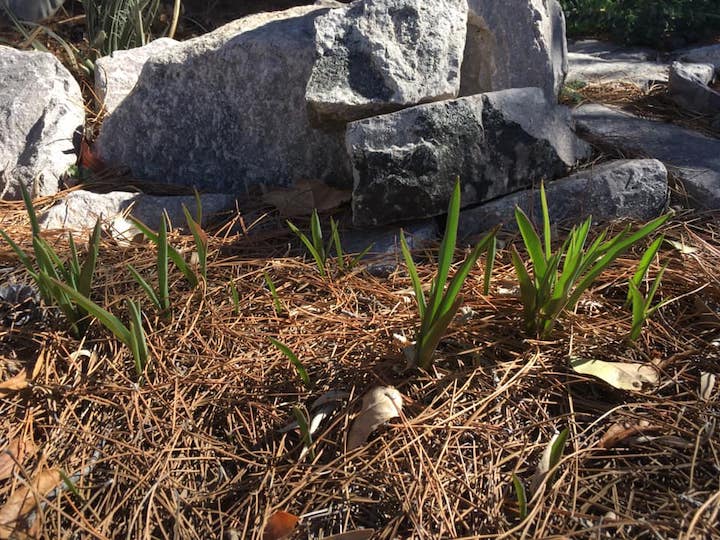Spring bulb planting time is on across North America! Many types of bulbs do well in desert and xeric gardens: hyacinths, ranunculus, iris, narcissus, crocus, alliums can all be happy. One bulb that’s often left off the list are tulips. Why is that?
The tall flashy hybrid or Darwinian tulips that fill the catalog photos are usually considered an annual in most desert gardens. They require more chilling than the our desert winters can usually provide and can be a little fussy about soil and water.
But tulips can be very happy in xeriscapes. In fact they can get so happy they’ll set seed and naturalize in the right conditions. And which tulips are those you ask? (Yes you did, I heard you.)
They’re species tulips and are non-hybridized. They’re more of “wild” type of plant. What’s so special about them?
They’re tough, amazingly tough.
Tulips are originally from mountainous areas of the Mediterranean, Middle East and Asia. Some are also native to Southern Europe, North Africa, and several Mediterranean islands. They’re frequently found clinging to barren mountain ledges, rocky areas exposed to wind and cold, and drought ridden slopes.

For an interactive format with species information go here:
https://www.tulipsinthewild.com/map_table/tulip_origin_map.html
Species tulips are shorter and smaller than hybrids but what they lack in stature they more than make up for in resilience and showy display. They’re an early bloomer in the desert southwest which is wonderful for the pollinators that are often active on warm winter and early spring days.
Their foliage is usually more varied than hybrids; some have broad, curled edged leaves, some are tall and narrow. The color varies too, from a bluish tint to shades of green. Some varieties even have multiple blooms per stem.


Many species are attractive whether the blooms are closed or opened. They often have very different coloration inside and out.


Some have contrasting pollen color which adds great visual interest.


Species tulips are usually perennial in warm winter climates. They increase via bulb offsets while many will set seed. They aren’t fussy about soil as long as it’s well drained. But like all plants they do require water during bloom and while the leaves are green but still, not as much as other bulbs. They’re perfect for xeriscaped or low water landscapes since they require less overall water than other bulbs. Plus, they prefer to be dry during their dormant season, which is summer to fall.
These tough little beauties can occasionally be found in garden centers but for the best selection shop online, search for “species tulips.” Do some homework first, and become familiar with the the available varieties.
Plant these tulips from fall to early winter. Provide full sun and good drainage, rocky or lean sandy soils are ideal and most closely approximate their native conditions.
Don’t overplant with species that require a lot of summer water. Mix these bulbs with other plants that prefer hot dry conditions. Tuck them into those corners that get spring – early summer sunshine, spots that don’t get much summer water, or put in containers that you can enjoy and then ignore during the summer. Pot them in cactus mix combined with a small amount of regular potting soil and top with an organic mulch. Remember, drainage is a must and overly rich or high organic matter conditions aren’t to their liking.
If you live in a dry or desert region and have never tried species tulips, why not give them chance. You might just discover a new favorite.

Mine did fine on eastern WA
Do I need to provide extra chill ( x-# weeks in frig) to these if I purchase now in Northern Cal. garden center? To my knowledge they are not pre-chilled.
Tulips sold at garden centers are ready to plant. There’s no need for extra chilling.